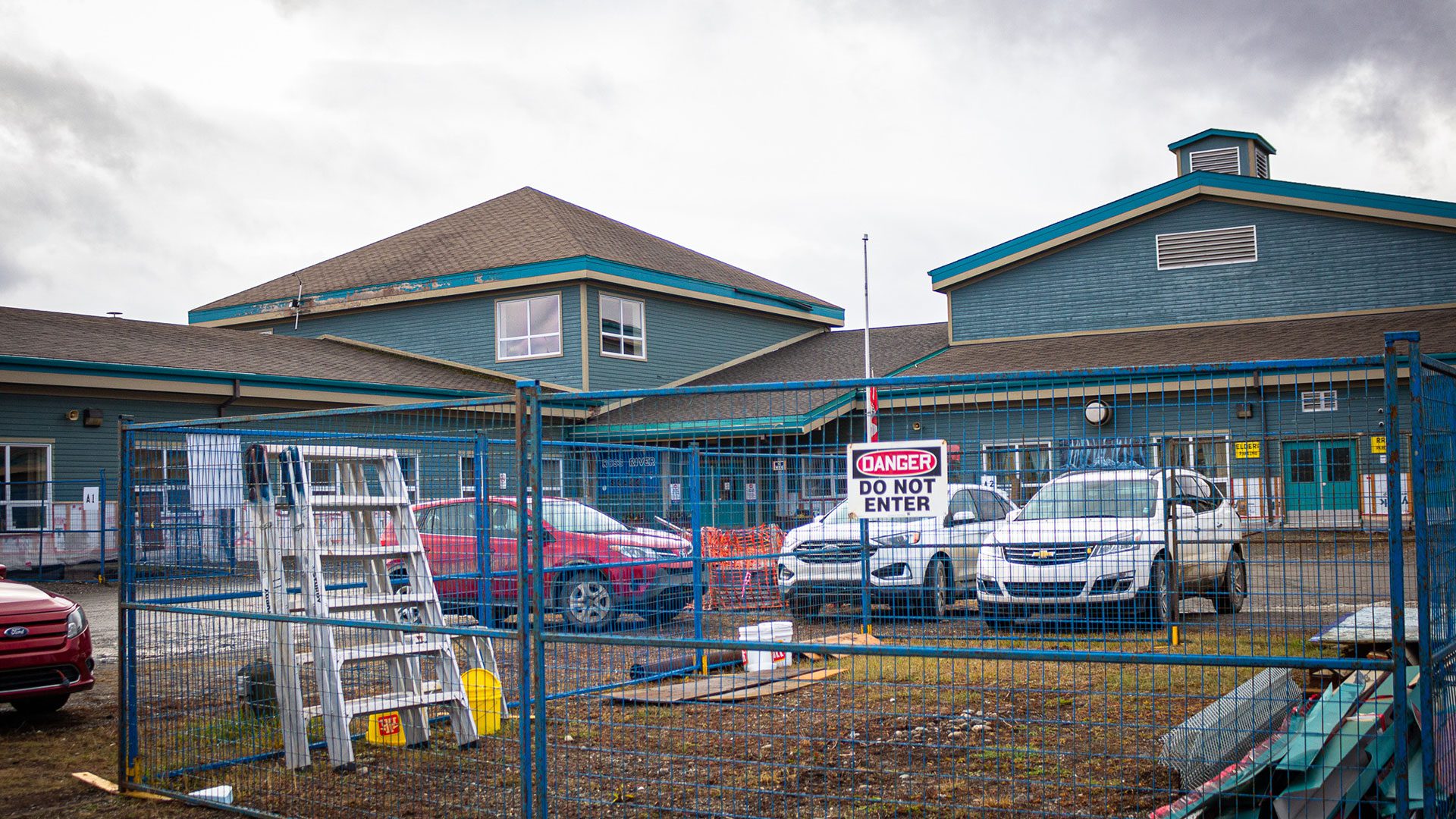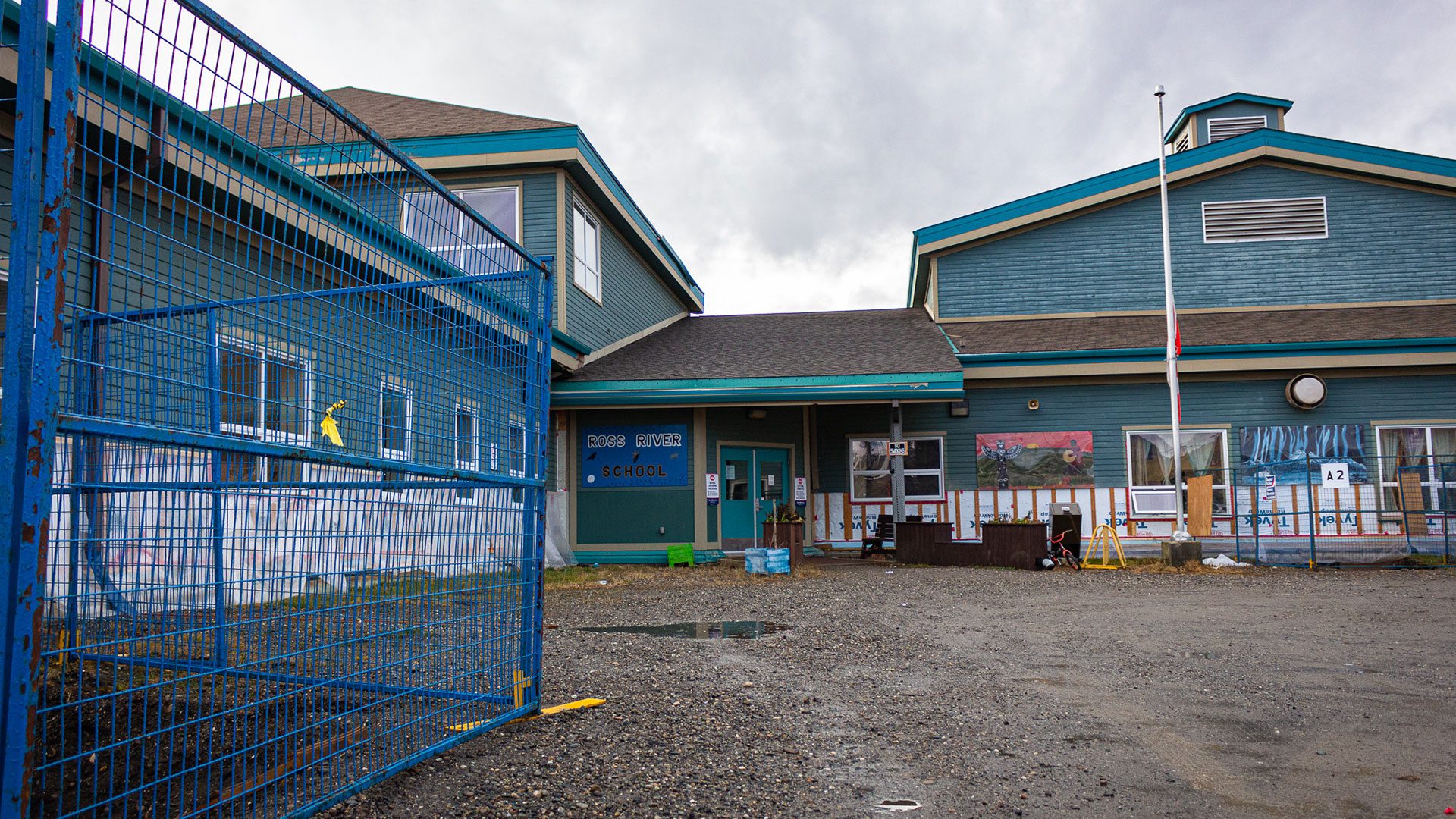Parents, staff, and members of a remote First Nation in Yukon are raising serious safety concerns about the community’s school.
The Ross River School is located in the community of Ross River, 410 km northeast of Whitehorse. The K-12 school is the only one in the community of just over 400 people, which is also home to the Ross River Dena Council (RRDC).
The school, which opened in 2000, made headlines in recent years due to its extensive repairs and structural integrity concerns that resulted in a temporary closure in 2015.
The school also experienced a problem with bat feces which was found on the building’s exterior in late 2020.
According to community members and Yukon government, changing permafrost has contributed to the need for structural assessments and repairs over the years.
“It’s unfortunate and definitely brings me concern,” principal Paul McFadyen told APTN News. “I do think about the psychological effects on staff, students and family over time.”
The school is currently going through a re-leveling project, the second project of its kind to take place in the last few years.
McFadyen says that the project was expected to be completed before the school year started but has been extended to the summer of 2023.
“The school’s been in a situation now for many years, and there isn’t a definitive plan to replace, it’s more of an ongoing of re-leveling and propping up of the building,” he said.
“Some of the construction is already taken place and is left kind of exposed and it’s not ideal to start your school year in the midst of the construction in some ways.”
Fran Etzel, a staff member and former principal, said the stress of dealing with the building impacted her mental health.
She said she has major concerns about the numerous cracks that can be seen on the school’s walls and are worried its roof will cave in, among other things.
She noted a few years ago large windows in the school’s library came crashing down in a windstorm causing shattered glass to go everywhere. Contractors have since placed a plastic film over the windows as a safety precaution.
But Etzel said she still feels unsafe.
“It’s not a good feeling when you come into the school,” she said. “It’s one of the reasons I stayed on so long as principal… is just keeping an eye on the children, on the building, making sure we’re safe.”
First Nation concerned

RRDC is also taking issue with the many problems plaguing the school.
Councillor Dorothy Smith said timbers placed in the ceiling are too big and could cause serious harm to children if they were to fall.
She noted there’s wasted space in the school which is costly for heating and that permafrost under the school is melting because warm air is escaping due to a hole in the library.
“Parents are afraid the school will fall, and because of this parents keep the students home and (they) miss a lot of school,” she said.
Chief Dylan Loblaw, whose children attend the school, has similar concerns.
He said the territorial government, which is responsible for maintaining the school, has only provided “band-aid fixes.”
Loblaw said government officials told RRDC they would continue to monitor the situation. However, he said action is needed now.
“We’re being pushed aside. We’re hearing from the Yukon government they’ll come see us on their time,” he said.
Loblaw said the community has doubts about the longevity of the school building and is requesting a new one in a more suitable location.
“(It’s) for our children and our future,” he said.
While the school operates under the Yukon department of education, it’s also one of eight schools under the newly formed Yukon First Nations School Board (FNSB).
Executive director Melissa Flynn told APTN in a statement the board likewise has concerns.
“We have visited Ross River School and acknowledge this is not a safe learning environment…Moving forward, our priority is to work with Ross River Dena Council and Yukon government on providing a solution to this crucial problem,” she said.
Government taking action

But according to Yukon government, the situation is being taken seriously.
In a joint statement from the department of highways and public works and the department of education, spokespeople Brittany Cross and Clarissa Wall detailed the territorial government’s commitments to the safety of students and staff.
They said the school undergoes assessments four times a year and that the most recent assessment found the school was safe for staff and students.
They also noted that “permafrost was identified in the original design of the school” and it has preventive measures in place to address changing permafrost, such as a thermosiphon system to help cool the permafrost beneath the school.
“Changing permafrost has contributed to the need for structural assessments and repairs over the years, but we continue to ensure the school is kept safe by mitigating the effects of structural movement through upgrades like the releveling system and by performing repairs to mitigate the effects of building movement,” they said.
The statement went on to say between construction on the school in 1998 and with ongoing mitigation efforts expected to be completed in 2023, the territorial government will have spent approximately $8 million on maintenance and repairs, with approximately $1 million of that amount spent on inspections.
“The Department of Education will continue to work with the First Nation School Board and Ross River Dena Council to ensure the school meets the short and long-term needs of the community,” they said.
But Loblaw isn’t convinced.
He said it’s only a matter of time before a proper school is needed and RRDC must be part of any decision-making processes.
“The mitigation measures currently put in place to keep the structure safe are short-term,” he said.
Meanwhile, McFadyen said the territorial government’s engineers have been transparent with reports and he trusts that the school is safe enough for children to attend for the time being.
Despite his and others’ concerns, he said the school’s main focus right now is on its students and making sure they feel happy and supported.
“We’re talking about our most precious resource and that’s our children,” said McFadyen.









